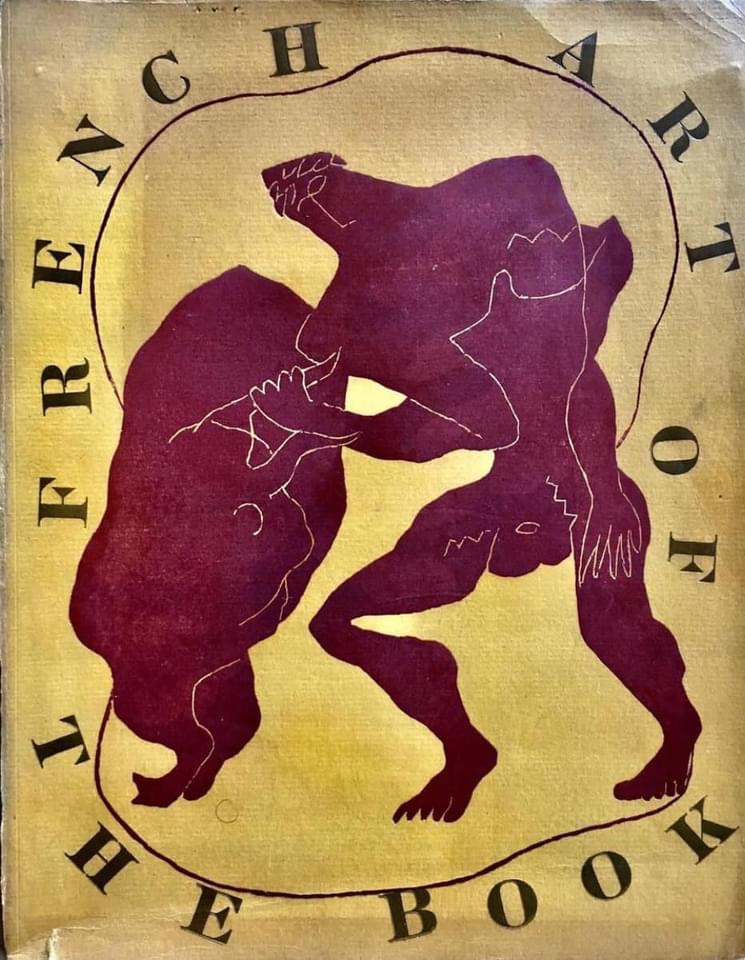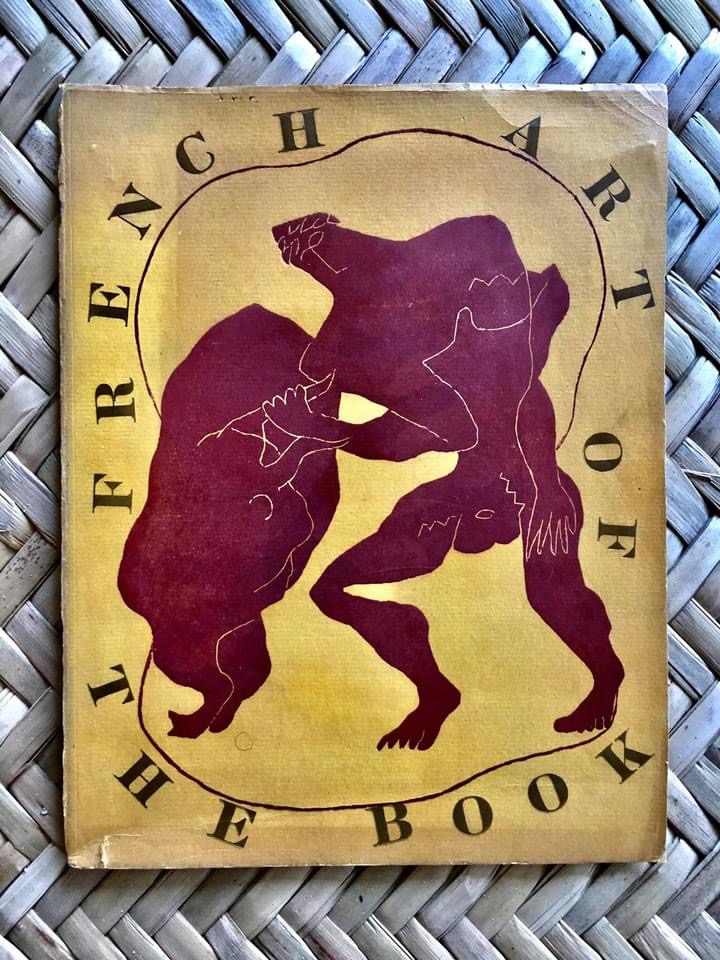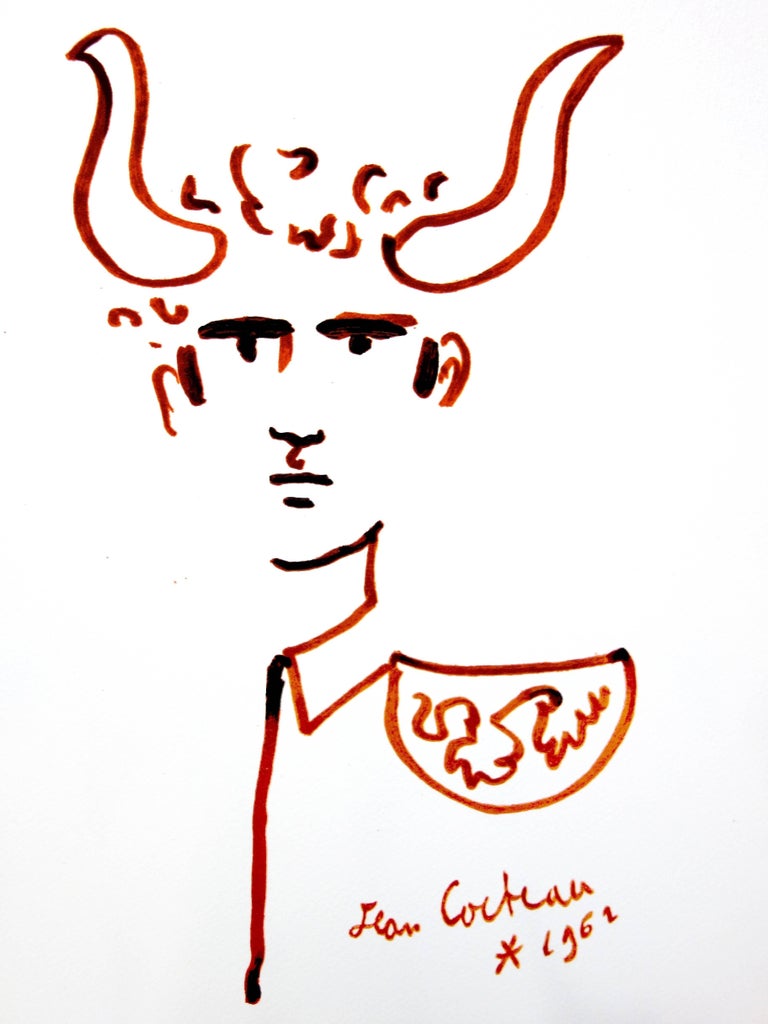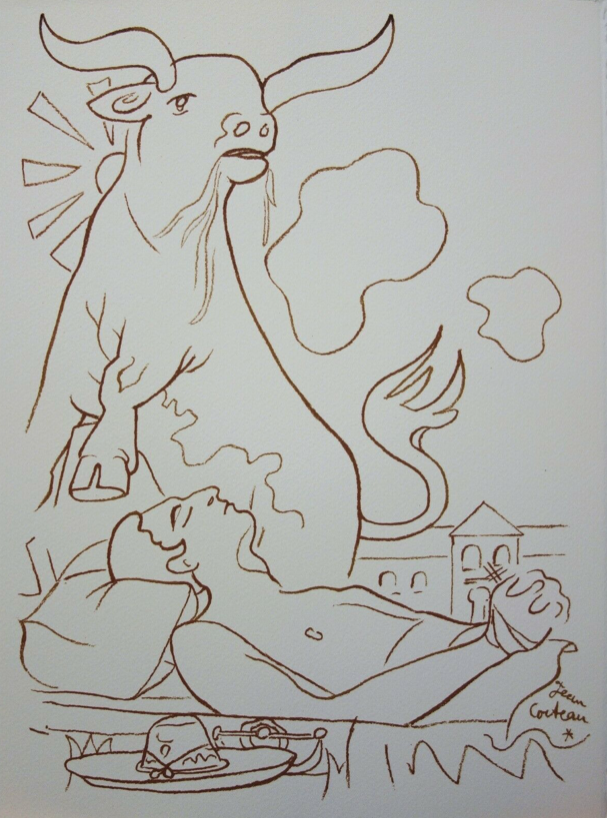Jean Cocteau Cover Print from 1949 Exhibition Catalogue.
“Cover of an Illustrated Catalogue from a 1949 Exhibition on The Palace of Legion of Honour in San Francisco, California. Edition of 1200 copies. Measures 8.75 x 11.5 inches.
Cover artwork seems to be by Jean Cocteau, but name not included on cover, other than title if publication. Signs of aging, small tear at lower left, mild creases.
Cover is depiction of a male figure having a tête-a-tête with a bull. The verso is blank, with book binding glue marks from when it was originally a publication. Color of photographs slightly intensified; color is more faded in person.
USD $125.
Part of the Private Art Collection of a Los Angeles Collector of Mid Century Art, who passed away in 1999. Acquired via his estate in Puerto Vallarta, Mexico.
Jean Cocteau
Jean Cocteau was an enormously influential French artist and writer known as one of the major figures of Dada and Surrealism. With an oeuvre that spanned painting, novels, poetry, plays, and films, Cocteau established himself as a leading creative force in Paris. A regular member of the avant-garde, he maintained long-term friendships with artists such as Pablo Picasso, Tristan Tzara, Francis Picabia, and Man Ray. “The job of the poet (a job which can’t be learned) consists of placing those objects of the visible world which have become invisible due to the glue of habit, in an unusual position which strikes the soul and gives them a tragic force,” he once mused.
Born on July 5, 1889 in Maisons-Laffitte, France, the self-taught Cocteau would regularly draw his friends and acquaintances in a distinctive, fluid style informed by his interests in Cubism, psychoanalysis, and Catholicism. “Poets don’t draw,” he once quipped about his artworks. “They unravel their handwriting and then tie it up again, but differently.” Among his best-known works is the novel Les Enfants Terribles (1929) and his critically acclaimed films le Sang d’un poète (Blood of a Poet) (1930), La Belle et la Bête (Beauty and the Beast) (1946), and Orphée (Orpheus) (1949).
Cocteau died on October 11, 1963 at the age of 74 in Milly-la-Foret, France. Today, his works are included in the collections of The Museum of Modern Art in New York, the National Gallery of Art in Washington, D.C., and the Courtauld Institute of Art in London, among others.





